
I had not been up Glen Callater for a number of years but last week, after a wet morning, went for a run over Creag nan Gabhar returning down the northern half of the glen. Credit should be given to Invercauld Estate for provision of the car park at Auchallater which is very well used
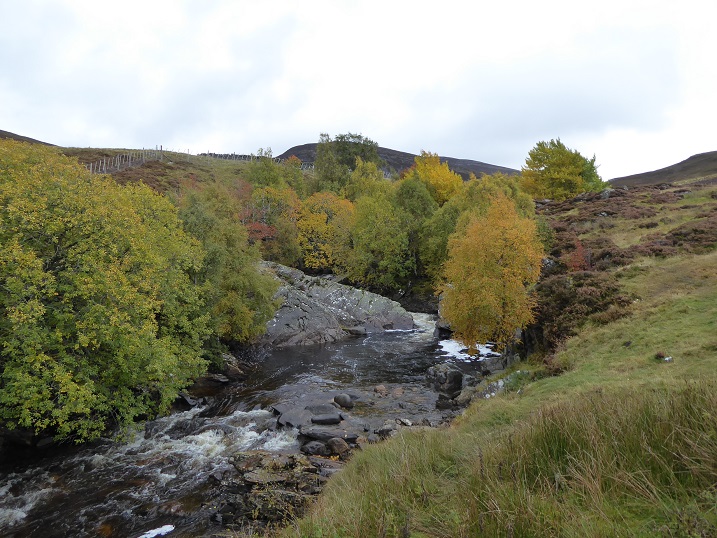
The view from just above the car park is misleading: a beautiful gorge, an area of mixed deciduous woodland and some natural regeneration on the strip of land between the Callater burn and a deer fence. It’s an approximation of how one might expect the natural environment to appear in a National Park.
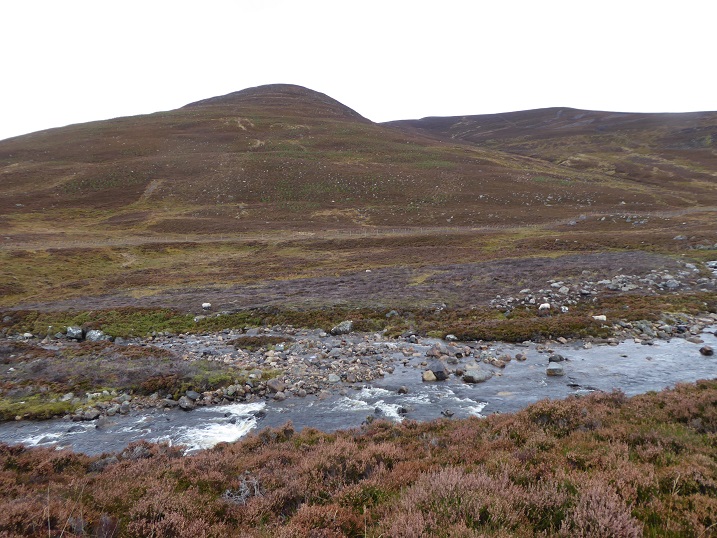
Beyond the gorge, the view changes drastically to a farmed landscape. Tree farming dominates the centre rear. The whole slope has had hundreds of divots excavated to create mounds for planting native trees behind a deer fence. And in the foreground grouse farming, characterised by the large patch of muirburn.

Just a couple of hundred metres further on, postage stamp tree enclosures (see here) have been created as part of an EU Life Project to help protect the freshwater pearl mussel by preventing silt being washed off into rivers. It should also incidentally improve the fishing, more farming to produce game species, as the trees drop leaves and invertebrates into the river providing more food.
While planting trees on river banks can help reduce flooding and erosion, creating postage stamp pockets while burning the ground beyond makes very little sense. In Glen Shee, there are places where the Invercauld Estate has burned the land right up to the postage stamp fences:
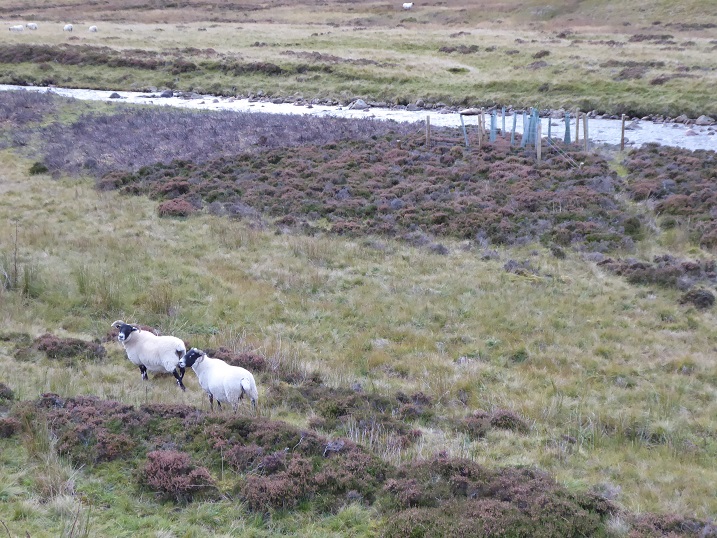
Added to which there are large numbers of sheep, more farming. Outside the plantations and post stamp fencing, almost nothing that grows has a chance. It’s burned or chewed to bits. As a consequence of the burning and chewing wildlife, except the red grouse and a few other species which depend on heather, disappears. Apart from red grouse, a couple of raven were the only birds I saw.
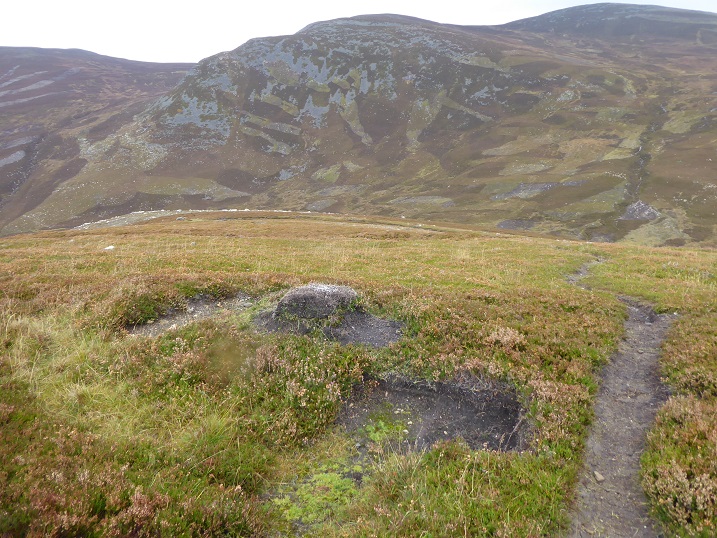
Promoting unnaturally high numbers of red grouse helps pass on disease, hence dotted among the burned strips are mounds with medicated grit. More farming, but unlike agriculture unregulated.
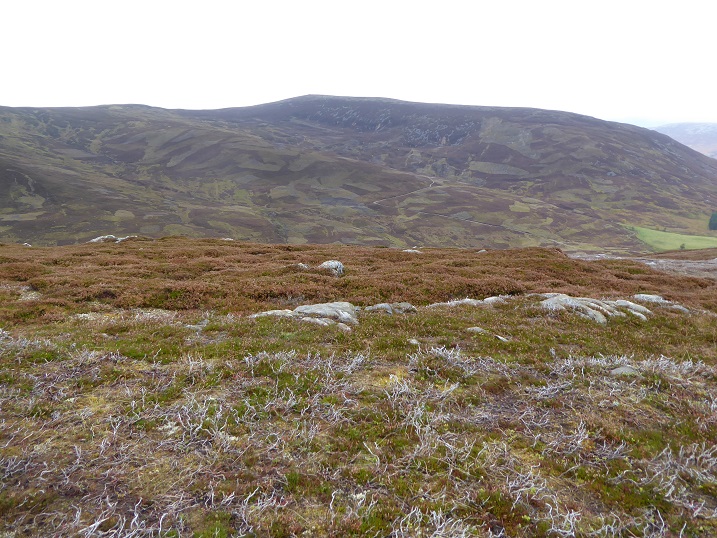
Almost everywhere you look, the land has been burned to bits.
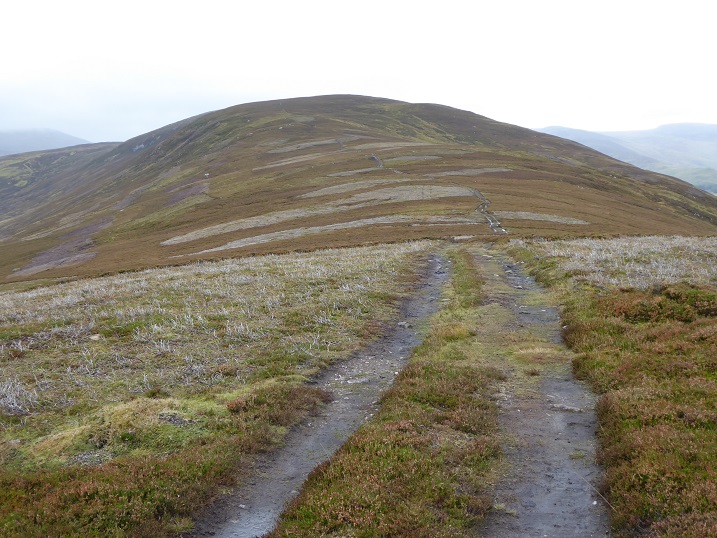

Until the middle distance, there is hardly an inch of land that has not been burned. The idea that planting some postage stamp bit of woodland alongside rivers might somehow compensate for this destruction is clearly nonsensical.
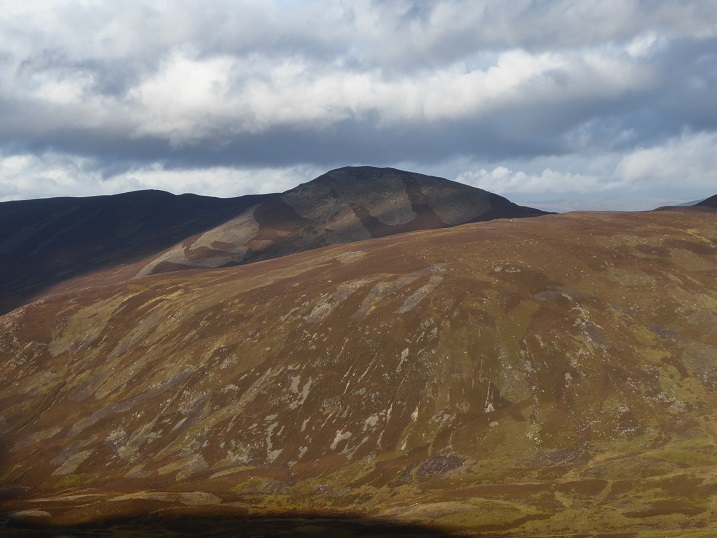
The burning extends right to the very tops. Despite it being a well known fact that muirburn considerably increases the rate that water runs off the hill, four years after Ballater was almost destroyed by floods (see here for video), nothing appears to have changed.
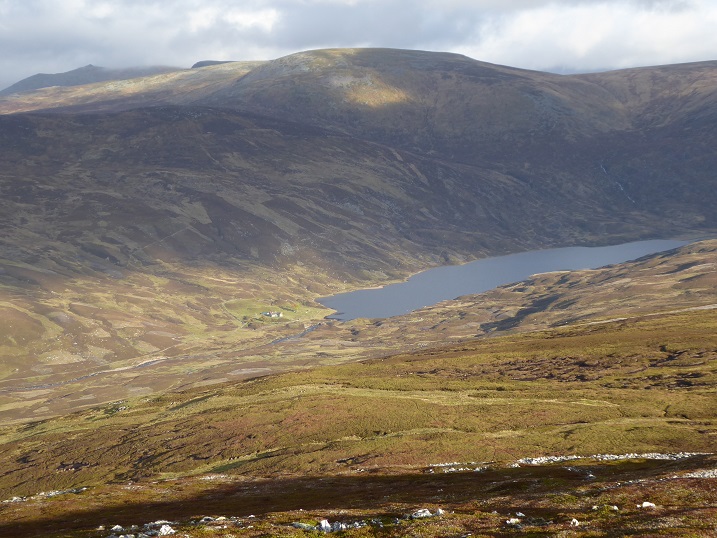
The muirburn extends beyond the start of Loch Callater, by my reckoning over 6km in length and covering an area of over 12 square kilometres. A huge area of ground that could be used to create what are known as ecosystem benefits.
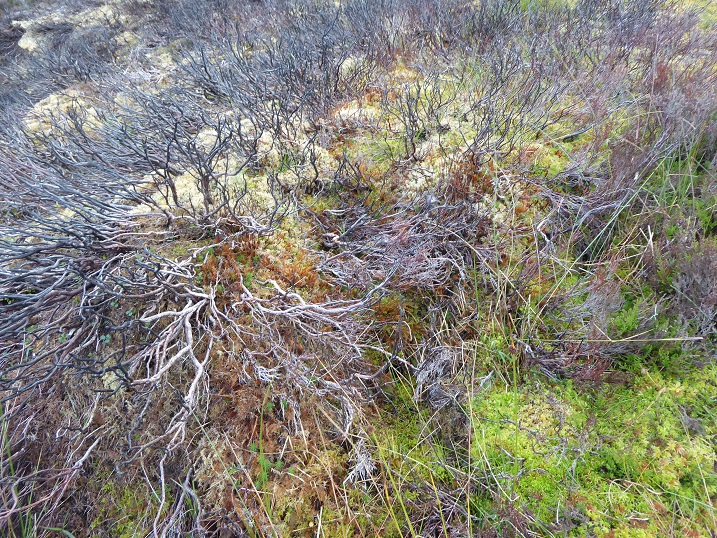
Instead the burning takes place without any consideration of what lies beneath.
The Invercauld Estate is a member of the East Cairngorms Moorlands Partnership, the means by which the Cairngorms National Park Authority is trying to improve moorland management. One of its aims is to try and work with estates to improve the way muirburn is carried out so that, for example, burning does not take place in areas of peat forming sphagnum mosses. The evidence from Glen Callater is that this voluntary approach is having very little effect.
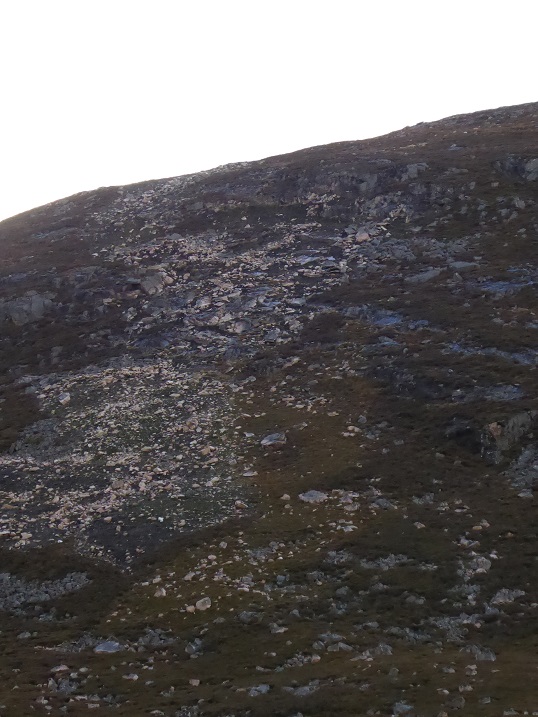
While the destructive impact of muirburn on peat is well known, it also destroys other habitats.
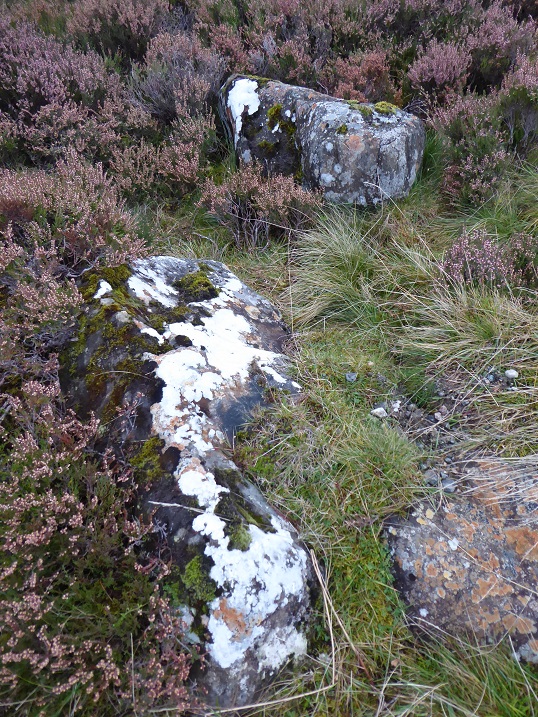
Lichens that can take hundreds of years to cover a rock……………….
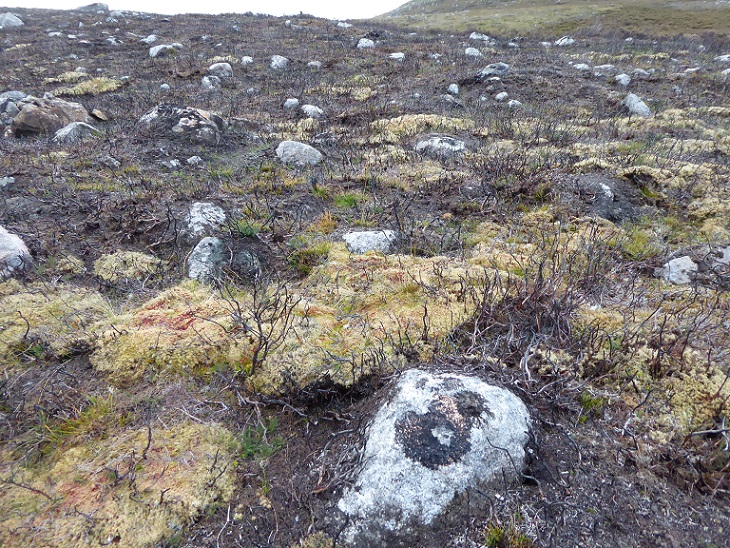
……….are incinerated after the strike of a match.
While the CNPA exhorts visitors not to light fires almost everywhere in the National Park (contrary to the Scottish Outdoor Access Code) it allows landowners to burn vast areas of countryside. There is something wrong here and it has nothing to do with conservation, whether of nature or of “cultural landscapes”. Muirburn is creating a new low in terms of how humans abuse the land………and is being allowed to happen in the heart of the National Park.
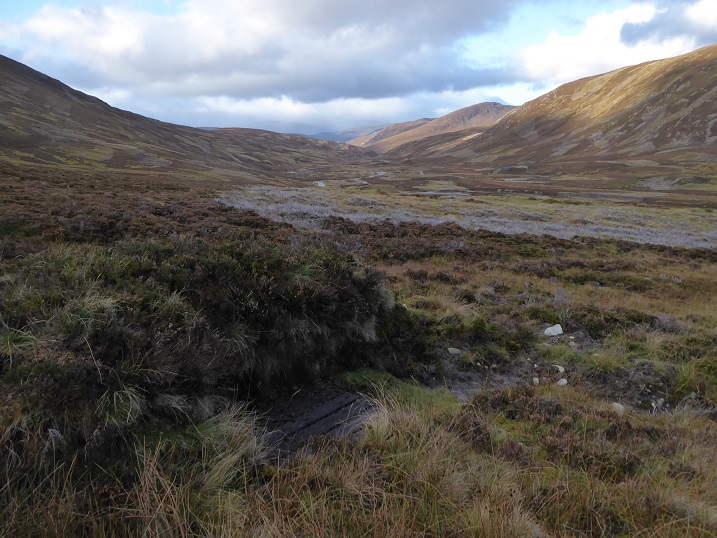
It is important to note, however, that no two estates practice intensive grouse moor management in exactly the same way, There are important variations. The grouse butts along Glen Callater are well hidden and easy enough to miss if you are walking along the road through the glen. There are also – as you can see from the photos – relatively few hill roads, with the main landscape atrocity being at the start of the road leading up onto Sron Dubh:
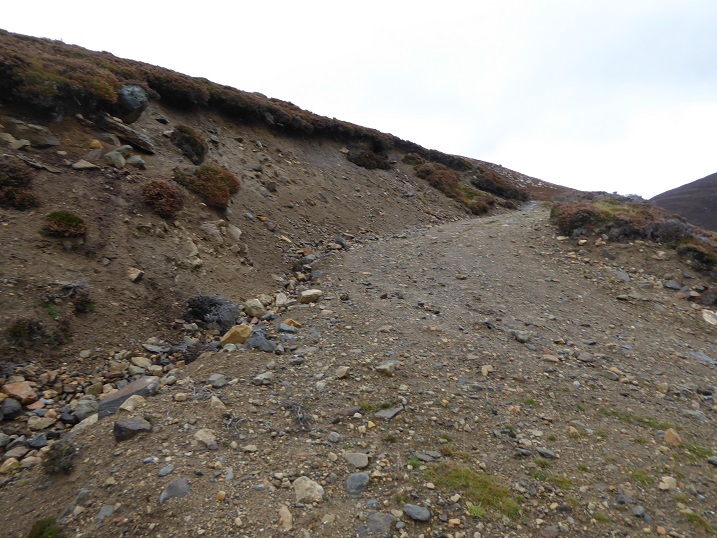
While Invercauld estate has been associated with a number of practices associated with intensive grouse moor management, including raptor persecution, the extent and intensity of the muirburn it practices is the most pressing issue.

Unfortunately, just two weeks after the temporary ban on muirburn introduced by the Coronavirus Act expired on 30th September, Invercauld was burning again.

Invercauld Estate, which is owned by a two trusts of the Farquharson family, is huge. It covers c44,000 hectares. Not all of what it does is bad and historically it has a long history of using its land to support outdoor recreation, from the Braemar Caravan Park to the Glen Shee ski slopes, and local communities. That is quite a contrast to many landowners in the Cairngorms. But its claim (see here for estate management statement) that its land management objectives are in accord with the objectives of the National Park is wrong unless those objectives have become totally debased.
If Invercauld was to end muirburn, that would make a significant contribution towards the Cairngorms National Park becoming a real National Park, with all the benefits that would bring, from carbon capture and flood prevention to the regeneration of the land and wildlife. If Invercauld is practising muirburn because the only way it can finance itself is by raising income from grouse shooting, then the answer is for it to open its books and join with the CNPA to call for new forms of state subsidy that would enable it to manage the land (and employ its workforce) to achieve conservation objectives. If, however, the trustees of Invercauld are burning the land for the god of grouse, they deserve no sympathy. In that case people need to start demanding that the land they manage as grouse moor is compulsorily purchased and handed over to the National Park Authority to manage in the public interest.

I don’t disagree with you that muirburn creates an ugly landscape and needs to change. There are alternatives to burning too. Where your article lacks impact is that you appear to have made no attempt to contact the estate manager at Invercauld to discuss the issues and see their point of view. The landscape is managed quite intensively and has been for many years, change takes time and support from all parties. If you stand on one side and throw stones, even though we’ll intentioned we won’t achieve much. Many estate workers are passionate about the landscape and wildlife they live in but they also rely on the estate for housing and income which does cost, a friendly conversation will go a long way educating both sides of the argument. Unfortunately the evidence shows that grouse moors do not recover well if left untouched. To change the landscape back to a more natural ecosystem requires management and support from the estates, CNPA, workers and NGO’s. If you can present more solutions and insights in these blogs I think we can move things forward more quickly.
If you stand on one side and throw stones, even though we’ll intentioned we won’t achieve much. – lovely sentiment but nonsense as many individuals and organisations have been trying to engage for a number of years with this from Government right down to estates and we get no where.
Invercauld may be owned by the two Farquarson family trusts but in my understanding is leased to an American, a very wealthy American. Apparently there is a Jeff Coons artwork over the snooker table in the big hoose.
The drive down Glen Clunie says all that needs to be said about heather management on this estate. The heather is burned through shallow soils, over wind clipped heath and into rocks and scree; all contrary to the Muirburn Code!
My understanding about the ‘postage stamp’ tree planting is that it was done using EU LIFE money in the Pearls in Peril project to ‘help’ lower water temperatures to improve salmon spawning which would help mussel glochidia by providing more salmon to latch onto. Seemed to me that the areas given over to trees are the equivalent of a f*art in a hurricane. There is a decent amount of new native woodland up the glen from Braemar which is welcome but from an estate which extends from Tomintoul to the Spittal of Glenshee is far too little, especially given the environmental damage over the rest of the thousands of hectares of land Managed For Killing!
Thanks very much for this and my apologies, I had heard the planting was part of the Pearls in Peril project but had a mental blank! I have amended the post to reflect this. I agree with your comments about the woodland at Braemar. The Morrone birkwood has great potential to expand but on the Invercauld side of the hill everything is burnt. Birchwoods are dynamic so stop the burning, reduce grazing levels to those in Glen Feshie and all sorts of exciting things would happen.
An absolute essential step is that public funding must be withdrawn when the muirburn code is flouted. Of course that would mean that there should be a system for monitoring and reporting breaches of the code. The Scottish Government Rural Payments and Inspection division are notorious for shrugging their shoulders and ignoring reported breaches. NaturistScot also dodge the issue and never seem to take action on breaches. Will the new environment watchdog take on this role?
Until this situation is led from the top – Scottish Government taking on the estates if they don’t start pay heed to their willful destruction – then this will continue. The Scottish Government seem to be complicit in this as any move would have to unsettle many supporters to their cause and, of course, the Monarch who has ‘rights’ over swathes of Scottish land.
It appears that certain estates are now justifying muirburn as an effective means of reducing wildfire risk. A letter in The Strathy (October 22), starts by stating, “Controlled burning of rank vegetation on our moorland is an important tool in protecting us from the frequency, extent and intensity of wildfires……”. It also states, “[It] is wrong to assume that muirburn is just carried out to improve grouse numbers for shooting”. It ends by stating, “The recent decline in herbivores on our moorlands has increased the importance of controlled muirburn to reduce rank vegetation and fuel loads”.
I’m interested to see comments on this apparent fake news. The use of the emotive word “rank” to describe dead or rotting vegetation is interesting – missing the point that this is an important part of natural ecosystems. It’s similar to the habit of describing predators on moorlands as pests.
I have also noted increasingly frequent suggestions that burning is to prevent wildfire. In a way it is a measure of our success, since it indicates a (correct) acceptance that the public won’t any longer accept the wholesale burning of our landscapes for grouse. However it does have an easy appeal to popular prejudice especially when allied to allegations that recent damaging fire seasons in Australia and California resulted from inadequate prescribed burning. Even a moment’s thought reveals that link as wholly spurious, but folk don’t always allocate even that amount of attention, so the suggestion – remembering that the purpose is only to create doubt not actually to succeed with the altenative ‘truth’ – gains pernicious traction.
I suspect the increasing use of the idea also follows the Saddleworth Moor fire in 2018, which led to an interesting fake news exercise in itself. The fire was started by unidentified people but was believed to have been extinguished before re-igniting. That re-ignition took place on land managed for grouse and the resultant huge fire largely burnt out that would-be grouse moor on the Stalybridge Estate. However the PR guys were soon on the scene and (largely successfully) fed news-stories that the fire was variously on RSPB owned or RSPB managed land and was exacerbated by excessive fuel load. They even managed pictures of heroic gamekeepers fighting the fire ‘on RSPB land’. The story was the inverse of the truth: it was conservation management including re-wetting that stopped the fire. You can still see that today by comparing the burnt area on satellite maps with the perimeter of the Stalybridge Estate. The stories also omitted the curious absence of a firebreak (which had been permitted by Natural England) that would have prevented spread of the fire from the lower to the upper moor. And a story remains to be told about Naatural England’s renewed funding of the estate following the fire.
Knowing the land 60 to 50years ago there was more grass,more sheep and muirburn was not practiced as intensively,the land has deteriorated due to excessive grazing and the result is a heather monoculture. The value iof the sheep has fallen ,grouse shooting pays more but the end is not ecologically sound.
Disagree with the cost of running some of the estate. The estate has shooting leases, within that lease, im led to believe, is the cost for everything, the keepers, vehicles, keepers houses, administration and even the cost of hiring the Factor to run the shoot which makes being an agricultural tenant on shooting land a no win situation. So the estate dont seem to be paying for anything, the shooting tenant does. Invercauld seem outwardly friendly but if you are a tenant or employee it appears the opposite, allegedly money talks to Invercauld and you don’t agree raise complaints or are in their way, then they allegedly become the aggressor and make quality of life hell